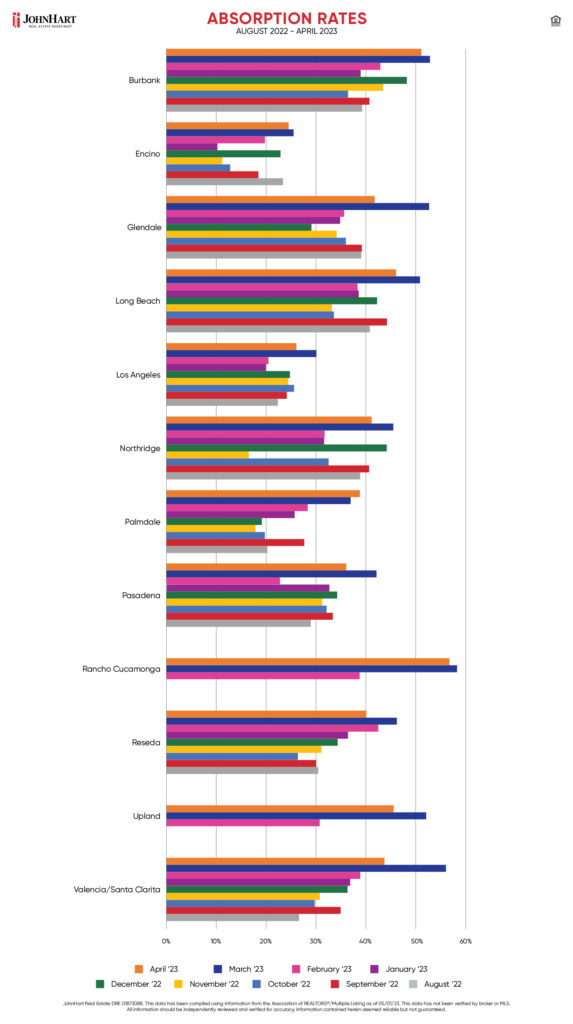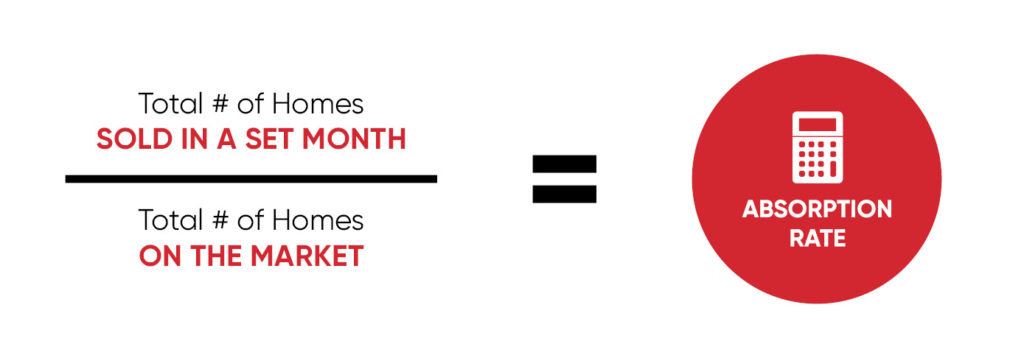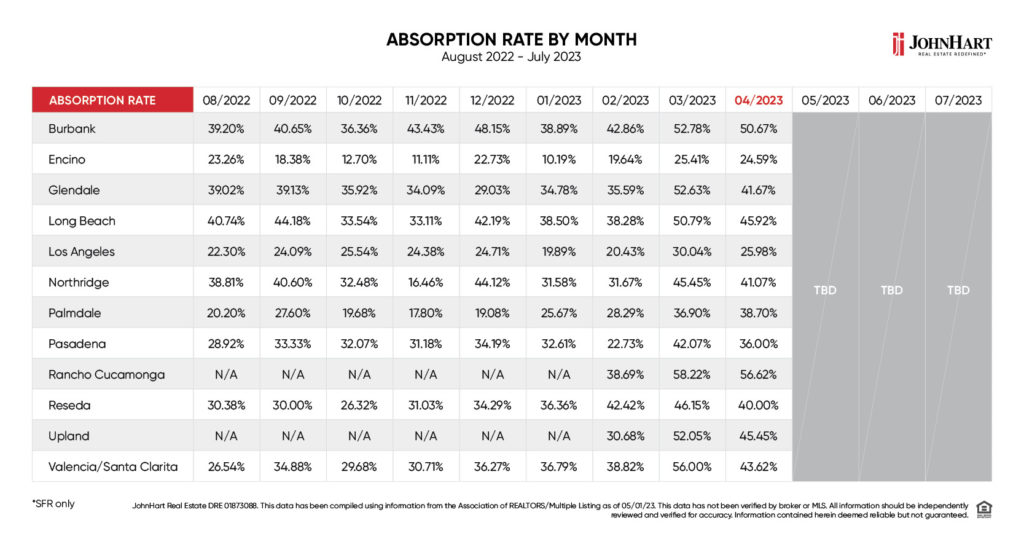Even in absorption rate analysis, what goes up must come down. It just seems that someone forgot to tell a couple of our neighborhoods. But after a March when we watched every neighborhood we service surge deeper into the seller’s favor, the scales seem to be balancing again. All but two of our neighborhoods dropped closer to a buyer’s market. And that’s while most of our neighborhoods actually increased their housing inventory. We’ll take a look at April’s most dramatic moves, but first, let’s recap the absorption rate FAQs. If you’re a regular feel free to scroll down to the meat.
Absorption Rates – April 2023
- Burbank – 51%
- Encino – 25%
- Glendale – 42%
- Long Beach – 46%
- Los Angeles – 26%
- Northridge – 41%
- Palmdale – 39%
- Pasadena – 36%
- Rancho Cucamonga – 57%
- Reseda – 40%
- Upland – 45%
- Valencia/Santa Clarita – 44%
Absorption Rate FAQs
What’s an absorption rate anyway?
An absorption rate is a statistic used to gauge whether a housing market favors the buyer or the seller. The country as a whole considers an absorption rate of 15% or below favorable for those seeking to purchase a home. Absorption rates of 20% or more tend to indicate a market that favors a seller. These numbers should be considered guides more than set-in-stone rules.
Where are the townhouses and condos?
Our absorption rate analysis only accounts for single family homes. They’re what the vast majority of our clients want to own. Therefore, we only track our single family housing inventory. It just creates a more accurate picture for our readers.
How is absorption rate in real estate calculated?
Using this simple absorption rate formula that divides the number of homes sold in a month by the monthly housing inventory:
A Steep Drop in Valencia/Santa Clarita… and Stabilized Housing Inventory
The biggest drop of the month goes to the Valencia/Santa Clarita area. They fell an impressive 12 percentage points. But buyers shouldn’t pop the champagne corks quite yet.
That’s because this unincorporated community is still clocking in with their second highest absorption rate since we started releasing our numbers in August. At a 44% absorption rate, the Valencia/Santa Clarita sunlight still falls heavily on the seller. That being said, they also still have a healthy enough housing inventory, so it will be interesting to see if they continue their slide through May.
Glendale Levels Out
Right behind them with a sizable drop of their own is the community of Glendale. The intensely popular neighborhood dropped 11 percentage points to a 42% absorption rate.
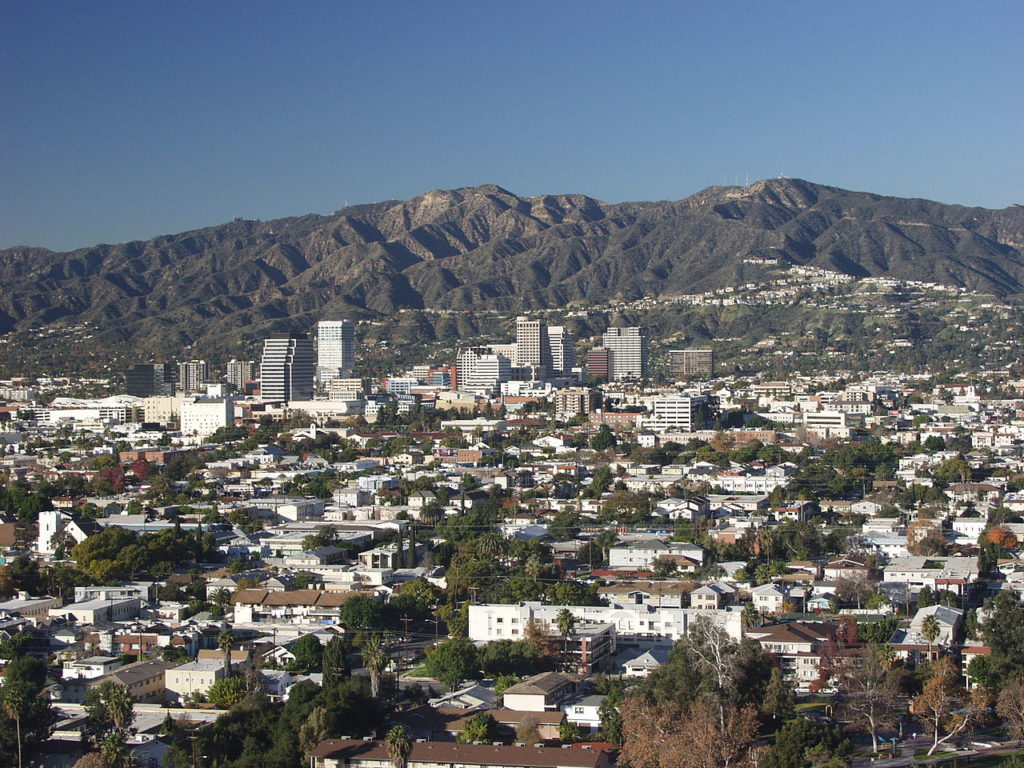
Admittedly, 42% still strongly favors the seller. But March’s 53% absorption rate for Glendale was more anomalous when looking at their overall record since we’ve released our stats. Glendale’s still a bit high. But the 11 percentage point drop could simply be the community leveling out to its more predictable absorption rate range.
The Neighborhood with Rising Absorption Rates and Dropping Housing Inventory
Then, there’s the neighborhood that just keeps climbing. Palmdale used to be one of our reliably low absorption rate neighborhoods. But it started crawling out of the buyer’s favor last November and has been steadily building its absorption rate ever since,
Even with the entire Greater Los Angeles area seeming to have sympathy on the buyer in April, Palmdale ticked upwards by two percentage points. The result? A 39% absorption rate; maybe not that high compared to other neighborhoods on our list. But it’s a record high for Palmdale.
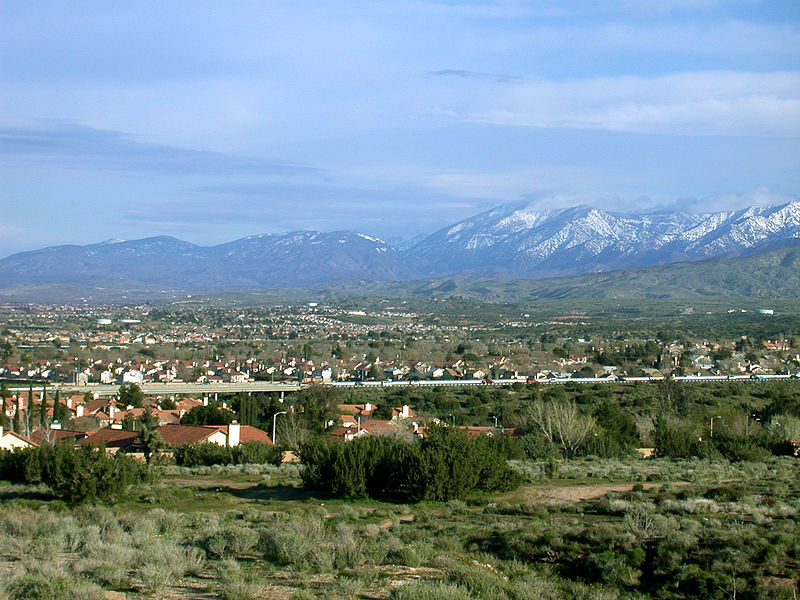
And while they still have a decent housing inventory, it’s dropping little by little every month. Could be a good time to list your home for sale in the desert community that only seems to grow with popularity.
While the Others Drop, Encino Stops
Palmdale was the only neighborhood this month that actively moved deeper into seller’s territory. Encino is worth a mention for doing absolutely nothing when the other neighborhoods dropped. It’s maintaining its 25% absorption rate for a second consecutive month. And though homes have been selling in this valley community, the housing inventory has stayed steadily around 90 homes for the last three months.
April’s Balancing Act
We can’t ignore that every neighborhood we serve is still pretty firmly entrenched in a seller’s market. But April was largely a month of balancing. Will these neighborhoods continue to drop toward a buyer’s favor? Could Encino maybe even make it back to the buyer’s market again? And what will May’s housing inventory look like? We recommend checking in with one of our talented agents for a more in-depth analysis tailored to your real estate goals!


